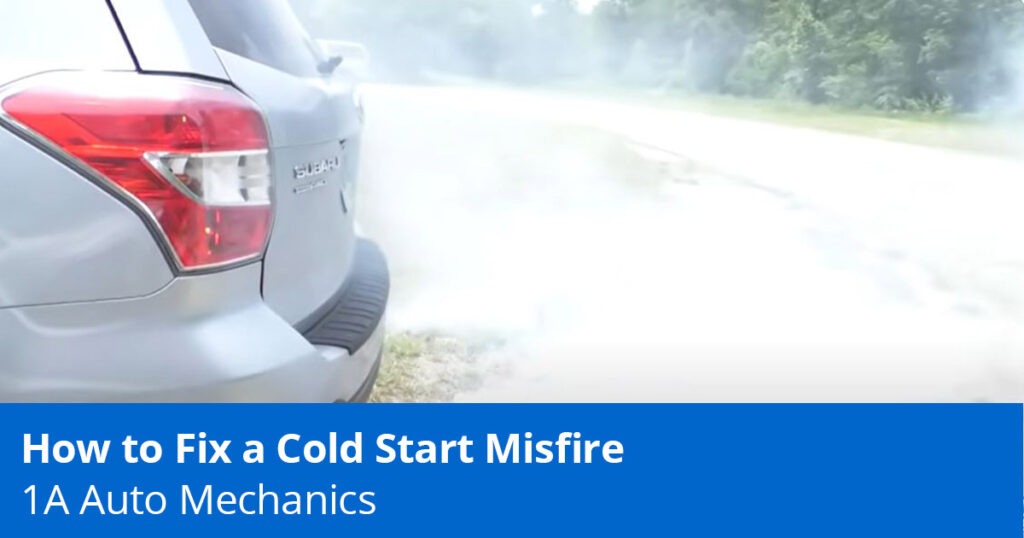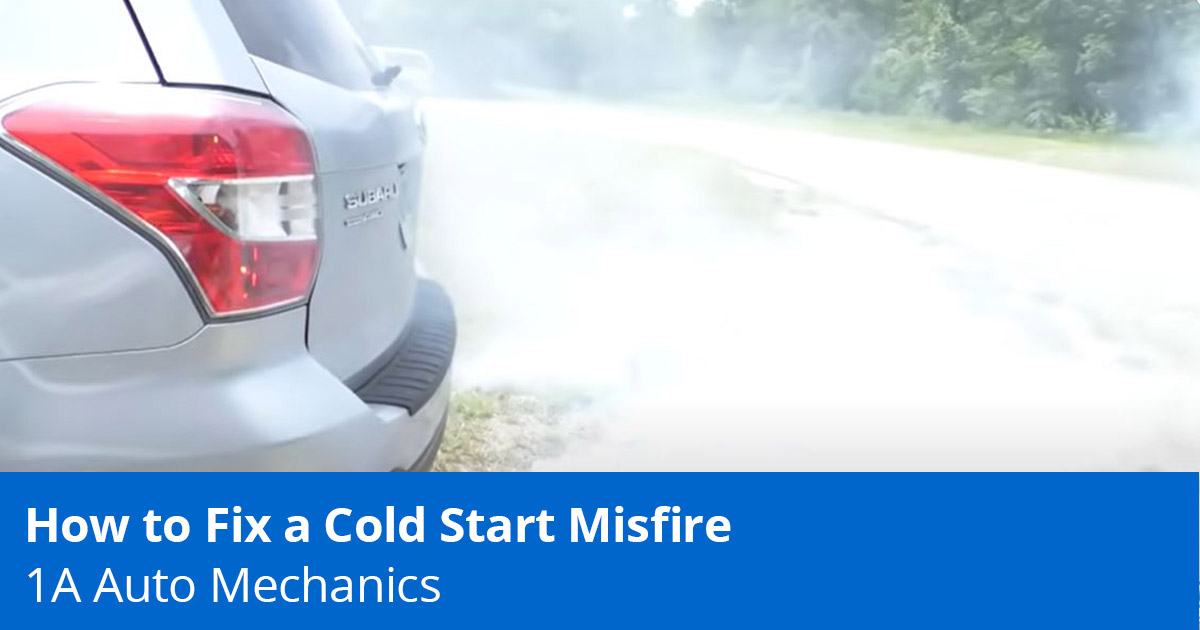
If you experience an engine misfire when cold, decarbonizing it might fix the problem. This post and video explains how to decarbonize an engine if your car’s misfiring at start up when the engine is cold.
What Causes an Engine Misfire When Cold?
Direct fuel injection could cause a cold start misfire. With direct fuel injection, fuel does not touch the back of the intake valves. Since the gas and additives can’t clean the intake valves, carbon deposits can build on them.

How to Decarbonize the Engine
Steps for Engine Decarbonization
- Remove a part from the top of the intake to access the valves
Remove a part from the top of the intake to access the valves. In this example, we removed the MAP sensor
- Turn the car on
Before spraying into the valves, turn the car on
- Spray into valves
Spray into the valves and cover some of the opening to prevent a vacuum leak. Let the engine cleaner coat the intake valves

- Reinstall the part to the top of the intake
Reinstall the part that you removed to access the valves
- Let the car sit for a few hours and soak
Let the cleaner soak on the valves for a few hours before starting the engine up
- Rev at 3,000 RPM in Park until the smoke clears
Turn the car on, put the transmission in Park, and rev up to about 3,000 RPMs to clean the carbon. A lot of smoke should expel out the exhaust. Do this until the smoke clears

- Drive the car and turn the automatic transmission to manual mode for higher shifting RPMs
Drive the car aggressively but safely in a safe area to clean the engine. If the car has an automatic transmission, turn it to manual mode so the transmission shifts at a slightly higher RPM than usual. This will heat up the engine and remove most of the smoke inside.
Don’t stay in the high RPMs for long, but drive it like a manual with delayed shifting so the engine doesn’t blow - Drive normally and turn the transmission back to automatic mode
After driving safely and aggressively and removing the smoke, drive the car like you typically do without pressing the gas pedal too heavily
- Let the engine idle before turning it off
Once done driving, let the car sit in Park with the engine idling to cool down, especially if it has a turbo
- Add fuel injector cleaner additive to the gas tank
Remove the gas cap, add a fuel injector cleaner additive to the gas tank and follow the instructions to clean the fuel injectors. Then fill up the gas tank to confirm it’s full

- Change the oil
Once the engine is cool, change the engine oil in case some of the cleaner leaked past the piston rings and into the crankcase
Learn How to Diagnose and Fix Parts Yourself
Learn how to diagnose and fix many different parts on your car with 1A Auto’s how-to videos. The 1A Auto video library has thousands of videos specific to many makes and models with step-by-step instructions from real mechanics to help your repairs.
Related Content
- How to Diagnose an Engine Misfire
- P0300 code: Mechanic advice to diagnose and fix
- Signs of a Failing or Bad Ignition Coil
- How to Test If an Ignition Coil Is Bad
Shop Parts at 1A Auto


Just wanted to add from my experience on several occasions that a lean full mixture can also cause the same symptoms, as a cold engine needs a richer fuel mixture to run properly, most common problem a slight vacuum leak (cracked vacuum hose ,bad intake gasket ETC.), Hope this may also be helpful to someone.